Alopecia Areata
What is alopecia areata?
Alopecia areata is a condition where hair is lost in isolated patches on the scalp of an otherwise healthy individual. It can also affect other parts of the body including the eyebrows and eyelashes. In some cases there can be loss of hair over the entire head, and even the entire body. It can affect children and adults, both sexes and all ethnic groups. It is not a contagious condition.
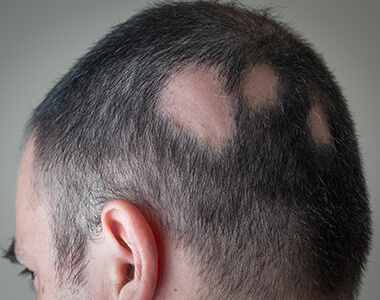
What causes it?
The cause of alopecia areata is not fully understood. However, it is thought to be an autoimmune disease. This means that the body’s own protection system turns against the growing hair follicles for some reason, and causes them to miniaturise and cease growing.
It may also be associated with other autoimmune disorders such as vitiligo, Addison’s disease and thyroid disease. There is also evidence that it can be inherited from both parents, so it is worthwhile establishing a family history of the disorder.
Symptoms and signs
Typically, the appearance of alopecia areata is of a localized bald patch on the scalp. Surrounding the area of baldness there may be malformed hairs known as ‘exclamation hairs’. Multiple patches may also appear and join together (coalesce), and in severe cases all scalp hair can be lost (alopecia totalis). Eyebrows, eyelashes, beard growth and nails may also be affected by alopecia areata. The skin where the hair is lost can appear normal and there is often no redness or inflammation associated with the hair loss.Another feature of the condition can be pitting or stippling of the nails, either on the hands or feet,
or both.
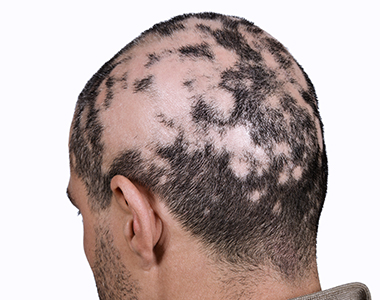
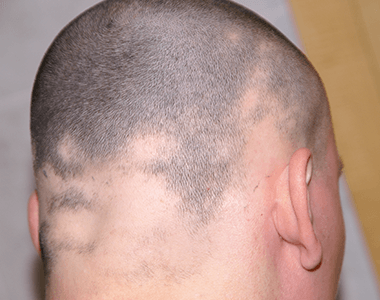
Treatment
There is little reliable treatment available for alopecia areata. In fact, it is often left untreated because hair growth can return spontaneously. This is because the follicles actually remain intact. Hair will regrow completely in about 50% of patients suffering patchy alopecia of less than 1 year duration.
However, in certain instances, the prognosis for recovery and regrowth is poor. For example, where hair is lost at the scalp margins (ophiasis) or the onset of alopecia totalis before puberty.
Treatments that may be recommended, and which can be effective in some cases, include steroid injections, the application of steroid cream, or the use of cream containing minoxidil. Minoxidil is used to counter male pattern hair loss by increasing the blood supply to the hair follicle. However, even if hair does regrow, there is no guarantee that it will not fall out again once the treatment is stopped.
Why see a trichologist?
A trichologist will be able to make or confirm a diagnosis of alopecia areata. They will also be able to give the sufferer a prognosis as to how the condition is likely to develop and what they should expect in the future.
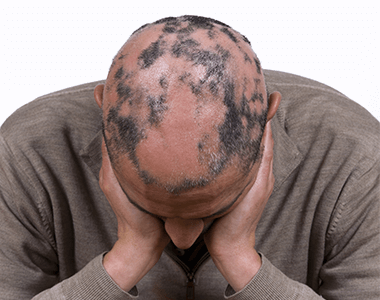
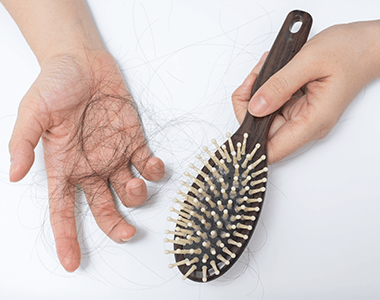
More facts
The charity Alopecia UK provides information and support for sufferers of all kinds of alopecia. Their website https://www.alopeciaonline.org.uk/ has a set of frequently asked questions, and there is also a separate site for children. There also forums on social media that provide advice and support.
The American charity National Alopecia Areata Foundation also has a website with useful information https://www.naaf.org/
Given that alopecia areata has no proven, single treatment for all, those with a confirmed condition and extensive, chronic hair loss may consider opting for a hairpiece or wig to replace their lost hair as a cosmetic solution. There are many sources for hair systems, wigs and hairpieces, with a wide variety of quality and cost. Our advice is to look around carefully to find the best solution for each situation.
FAQ's
[otw-bm-list id=”21″]
Case Studies
[otw-bm-list id=”22″]